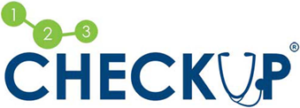Hold the SUGAR!
If you were to add a few teaspoons to coffee, then snack on toast with jam, and choose pop and barbecue chips at lunch – guess what? You would have just consumed 18 teaspoons (72 grams) of sugar.
Sugar contains simple carbohydrates but no other nutrients, and because it is in so many food products, it can add significant calories to your diet if you’re not careful. Read on to learn about sugar and how you can decrease your daily intake. One teaspoon (4 g) of sugar equals 15 calories.
Why you should cut back
According to Statistics Canada, the average Canadian eats about 23 teaspoons (92 grams) of added sugar each day from a combination of packaged and prepared foods. That’s a lot of sugar, considering that the Dietary Reference Intakes suggest we consume no more than 12 teaspoons (48 grams) of added sugar in a 2,200 calorie diet.
Sugar naturally occurs in fruit, vegetables and milk, but these are not considered “added” sugars and are not part of the 12-teaspoon (48 grams) daily maximum. These foods provide an abundance of vitamins and minerals and are important dietary staples.
So if you’re eating 23 tsp/92 g of added sugars a day, it means you’re ingesting 345 empty calories. If you fill up on sweets instead of more nutritious foods such as vegetables, fish and whole grains, your diet can become deficient in important nutrients. High-sugar diets may contribute to obesity and increased triglyceride levels, which are both risk factors for heart disease.
Where’s the sugar?
Most Canadians know that candy and pop contain lots of sugar. But what surprises most people is that foods such as tomato sauce, deli meats, salad dressing and barbecue chips are also loaded with sugar. Even though these foods may not taste sweet, they can still contain “hidden” sugar, since sweeteners can be used as preservatives, browning agents or to provide texture. If you don’t see the word “sugar” on an ingredient list, look for these alternative descriptions:
- Glucose
- Fructose
- Glucose/fructose or high fructose corn syrup
- Honey
- Cane juice
- Sucrose
- Syrup (corn, malt, golden, maple, refiner’s)
When these words appear in the ingredient list, the sugar content may be high. Use the Nutrition Facts table to determine total sugar content. Four grams is equal to a teaspoon of sugar, so a food with 16 g of sugar would contain four teaspoons of the sweet stuff.
Are some sweeteners better than others?
All sweeteners are high in calories and low in overall nutritional value, so you need to watch the total amount of added sugar you consume, regardless of the type. If you must use a sweetener, opt for maple syrup, honey or molasses, since they have more antioxidants than corn syrup or white sugar.While options such as brown sugar or honey contain trace amounts of minerals, you’d have to eat cups and cups (which I don’t recommend!) for the amounts to be nutritionally significant.



Leave a Reply
Want to join the discussion?Feel free to contribute!